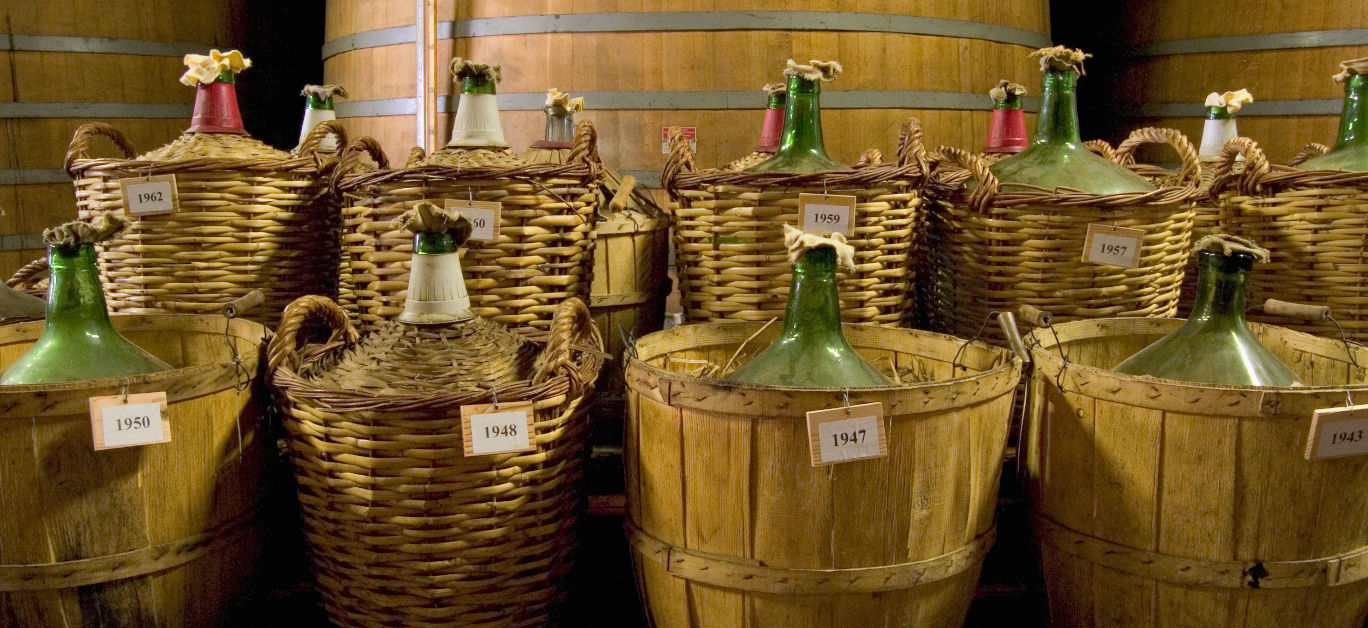Words by Amanda Garnham for the BNIA (Bureau National Interprofessionnel de l’Armagnac).
If you have ever had the pleasure of visiting the southwest corner of France, the chances are that you may have had the pleasure of tasting an Armagnac. Perhaps you have noticed its discreet mention on a restaurant’s wine and spirits list on the back page in the digestive section, though what do you really know about France’s oldest brandy?
What is it exactly?
Armagnac is a rare, handcrafted, small production brandy made solely in the designated Armagnac region in southwest France and enjoyed by connoisseurs around the world.
In the UK and USA, it is most often referred to as a brandy, much like its younger cousin Cognac, though in France it will be strictly called an eau-de-vie. So why is this and what is the difference? The word brandy is actually a shortening of the word ‘brandywine’ which was derived from the Dutch brandewijn, literally meaning ‘burnt wine’. Most brandy is made from wine that has been distilled and many countries make one, however, Armagnac is not any old brandy.
It is an AOC (Appellation d’Origine Contrôlée) product that must adhere to very strict rules and regulations for its production, which common-or-garden brandy does not, hence why the French happily denounce the ‘brandy’ word, proudly referring to this noble spirit as an eau-de-vie, in order to define its breeding. To make matters more complicated however, in English speaking countries, eau-de-vie, generally refers to a clear, colourless alcohol that is generally made from fruits other than grapes, such as apricots, plums, pears, etc.
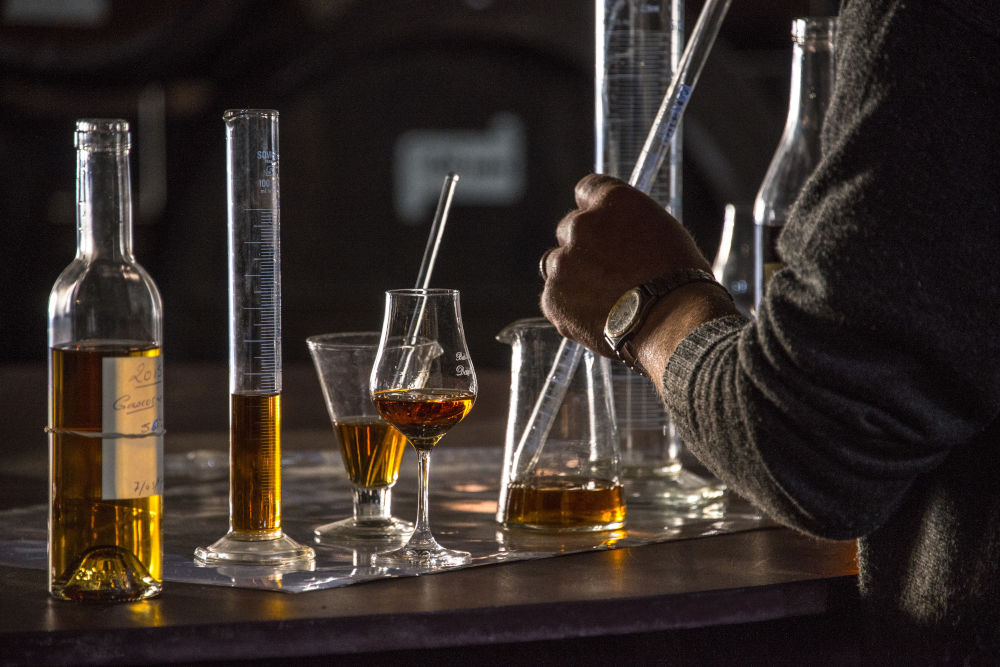
No matter where you come from, Armagnac is an eau-de-vie and a brandy. It is the oldest eau-de-vie in France, predating its Cognac cousin by 150 years, and was first written about by prior Vital Dufour in 1310 when he extolled its 40 virtues in Latin, in his book ‘How to keep your health and stay on top form’.
Among some of this ‘Aygue Ardente’s’ properties, this useful book, that now resides in the Vatican library in Rome, states that ‘it heals hepatitis if one drinks it soberly, it heals wounds by application, enlivens the spirit, partaken in moderation and when retained in the mouth it loosens the tongue to mention but a few!
In fact, the author may have had reason with some of his findings, as far more recent studies carried out at Bordeaux university have discovered that Armagnac is proven to have a beneficial effect on our health, namely in the prevention of heart attacks and thrombosis.
The gastronomic Gersois, inhabitants of this paradoxical (The French paradox is a peculiarity baptised so by foreign observers due to the nations low morbidity rate despite a rich diet) land of Armagnac, where the living is good, are no strangers to this news with a record for living the longest in the whole of France.
Where is it?
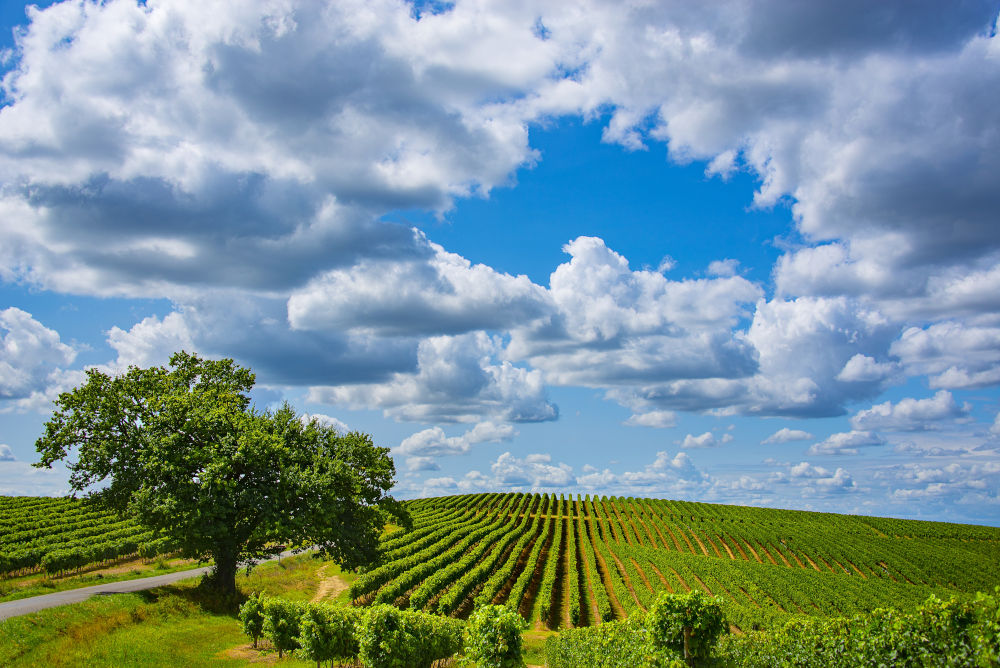
The Armagnac region can be found in the southwest corner of France, almost equidistant between Toulouse, Bordeaux and the Pyrenees mountains. It is a verdant land of mixed farming and biodiversity where small farms reign with their herds of cream Blonde d’Aquitaine cattle, sunflowers, vines, cereals, honey, walnuts and not forgetting the ducks, that outnumber the inhabitants of this often-forgotten corner of la France profonde.
This land of plenty is also home to the wines of Côtes de Gascogne, Floc de Gascogne (a local aperitif made with Armagnac) and Armagnac itself. The vines grow on the sloping hillsides facing the Pyrenees with a southerly exposition.
The Armagnac appellation extends over the three French departments of the Gers, some of the Landes in the east, and a part of the Lot-et-Garonne in the north. The vineyards for the production of Armagnac are split into the three production zones of Bas Armagnac to the west, Armagnac Tenarèze in the centre and Haut Armagnac to the south/southeast; they cover about 5,000 hectares that comprise 700 winegrowers.
It is a region that is quite renowned for its gastronomy with hearty country dishes and local fare that, more often than not, include the ubiquitous duck in all its forms, and other regional specialities such as prunes, walnuts, figs, wild boar, venison and traditional dishes like the croustade made with apples, soaked in Armagnac, of course.
Although ‘off the beaten track’, the Armagnac region is nonetheless famous and proud of its fabled local hero, the Musketeer d’Artagnan, who, although romanticised by Alexandre Dumas in his novel The Three Musketeers, was born in the south of the Gers and the many statues erected in his honour around the region welcome visiting tourists and pilgrims each year.
How is Armagnac made?
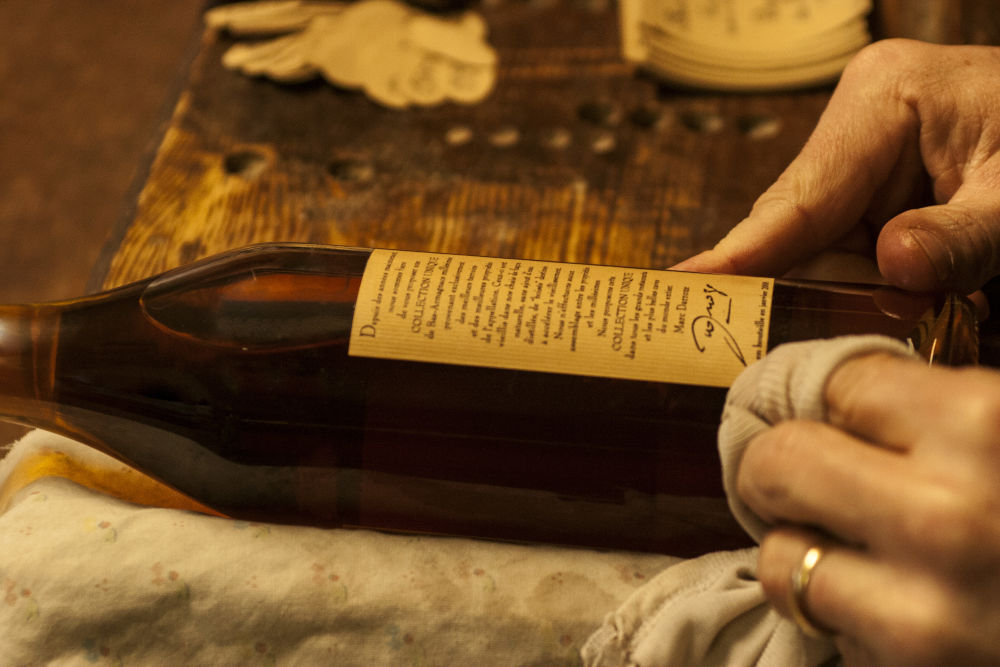
Ten different grapes are authorised for the production of Armagnac, though the four main grapes of Folle Blanche, Ugni Blanc, Baco and Colombard, are predominantly used. The other six varieties can be found in small areas throughout the appellation which all adds to the diversity of the final product.
The grape harvest (vendange) normally takes place in September, where the individual grape varieties will be harvested and vinified separately. As the wine is going to be distilled, it is absolutely forbidden to add anything to it such as sugar or sulphites, so the producer is looking to make a wine that is low in alcohol and high in acidity; it is the acidic nature of the wine that will protect it during fermentation before it is distilled.
More than 95% of Armagnac distillation takes place in a traditional, copper Armagnac alambic (still) that is either fuelled by gas or fired by wood, whilst the other few percent is distilled on a pot still, though this is rare with only three producers owning this type of still.
The specificities of continuous distillation (some say that Armagnac is distilled just once, though in reality it is continuous) means just that, the cold wine enters the alambic and is heated before entering the distillation column where it runs down through a series of plates to the furnace, where it bubbles; the resulting vapours rise, passing through the descending wine, becoming more and more highly charged with the aromas and characteristics of the wine.
When it reaches the top of the distillation column it cleverly crosses back over into the copper condensing coil that is housed within the wine heater, which itself is full of cold wine. The cold wine cools the vapours as they travel through the coil and hence the new eau-de-vie is born as they trickle from the alambic like water into the waiting barrel.
A key point in the distillation of Armagnac is that the producers are distilling to around 52 to 62% abv, which is a far lower degree of alcohol than most distilled spirits, thereby retaining the character and personality of the wine and indeed the producer who has laboured throughout the year tending the vines. In general, it will take about six litres of wine at 10% abv to make one litre of eau-de-vie at 60% abv.
La Flamme de l’Armagnac, as the period of distillation is known, normally starts around mid-October and will continue through the winter months with the official date limit of 31st March of the year following the harvest, though most producers have finished distilling by the end of the year. This is a fabulous moment in the calendar to visit the region, when producers welcome visitors with open arms to enjoy bountiful Gascon meals and hospitality alongside the bubbling alambics as the eau-de-vie flows.
Ageing Armagnac
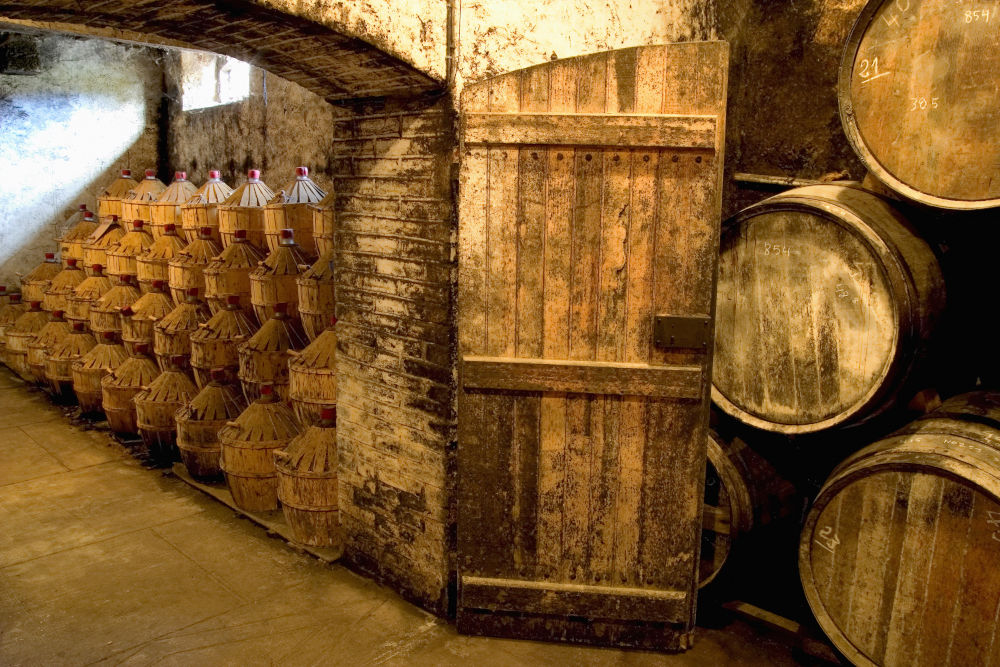
Once the clear eau-de-vie leaves the alambic it will start ageing in French oak barrels. As mentioned before, the respect for the individual grape varieties is paramount, so each variety will be aged separately. The centuries old cellars housing these rare elixirs also witness the annual evaporation of the Armagnacs as the angel’s take their share of about 2-3% annually depending on the atmospheric conditions of each cellar or chai as it is known in the region.
This is the cellar master’s sacred domain, where they are the custodians and alchemists in charge of the evolution of these brandies as they quietly mature. It is they that decide how long an Armagnac ages in a certain barrel, whether it should be moved to an older barrel that is no longer rich in tannins, whether they wish to blend certain varieties and ages or whether they deem a sole Armagnac deserves to be a vintage.
Nomenclature
Vintages are quite specific to Armagnac and as it is extremely rare to find vintages in other aged spirits, a vintage Armagnac is very special indeed. It is possible to find many different vintages (young and old or very old) throughout the region depending on the individual producer and people often make that special purchase to celebrate specific anniversary dates. A vintage must have been aged for a minimum of ten years in oak barrels and its year of harvest will be specified on the label ie. 1962, 1973, 2001, stating that the Armagnac in the bottle is just from that one year.
The cellar master’s travail is a highly skilled savoir-faire often transmitted from generation to generation and includes the work on creating an Armagnac blend that can be a combination of several different Armagnacs from different years and grapes to make one beautifully balanced, complex and harmonious product.
There are several different blend categories in Armagnac that have a minimum age requirement such as the VS or three star which is a blend where the youngest Armagnac in the blend must have been aged for a minimum of one year in oak. This is the legal minimum, though for each of the blends, many houses age over and above these minimum specifications. The youngest Armagnac in a VSOP (Very Superior Old Pale) must have spent a minimum of four years in oak, though it might have some twenty-year-old in the blend for example. Napoleon is a minimum of six years, XO or Hors d’Age, the doyens of the standard blends, a minimum of ten years for the youngest therein.
Armagnac enthusiasts will also delight in the older age statement blends offered by certain houses such as 25 or 30 years.
Every Armagnac is different
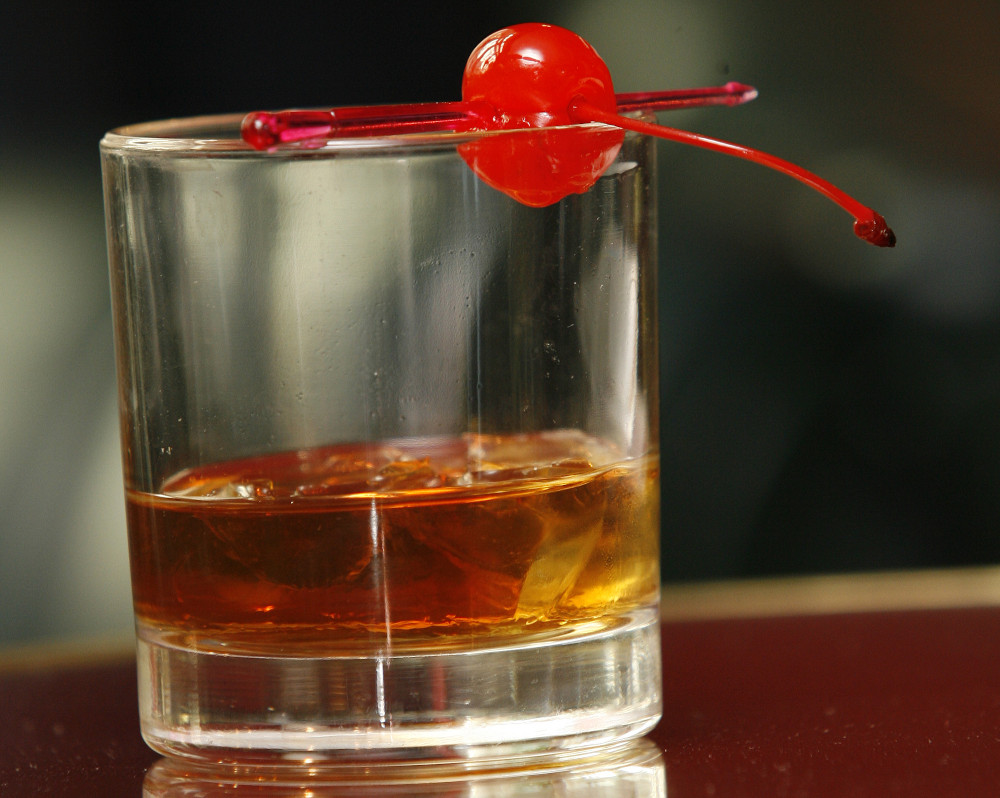
The choice of which Armagnac is a very individual one and there is an Armagnac to suit everyone. It will depend on the occasion, the time of day or a mood. Maybe you would choose a light, fruity and fresh style where you can really recognise its relation to the grape or perhaps it’s the end of a long day and you need a more powerful, possibly cask strength style to help you slowly unwind.
Once you start to investigate the category, you will be amazed at the sheer diversity of different ages and styles available, even those from one particular producer will all have diverse and contrasting personalities.
How to drink it
As mentioned earlier, Armagnac is often found on the drinks list in the section under digestive or after dinner drinks, and although this is a wonderful and classic way to appreciate its aromatic potential and characteristic, earthy complexity, this is not the only way to enjoy exploring the world of Armagnac.
A young Armagnac such as a VS or VSOP is equally at home as a long drink with ice, lengthened with tonic or ginger ale. If, however you prefer something a little more complex, the rich, deep flavours of an Armagnac will give extra meaning and a special je ne sais quoi to numerous classic cocktails from an Old Fashioned or Manhattan to a Sazerac or a Sidecar.
To conclude
In today’s world that oozes mass produced and standard products with steep price tags, Armagnac is indeed a rare treasure deserving recognition that is far more affordable and excellent value for money.
This author urges lovers of fine spirits to explore and discover this characterful and diverse product made with passion and care by small, family producers in southwest France.
Factbox
Website: armagnac.fr
Instagram: instagram.com/armagnac
Facebook: facebook.com/Armagnac.Official
All photography courtesy of the BNIA.












